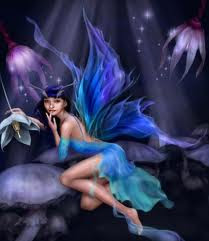The male merrow is ugly, with green skin, a sharp, red nose, and pig-like eyes. However, they are amiable and jovial. Crofton Croker adds in Fairy Legends of the South of Ireland that the male merrows also have green hair and teeth, as well as short arms that are more like flippers than arms.
Merrows will sometimes come ashore in the form of little hornless cattle, but generally wear read feather caps, which are their means of going through the water. Like selkies, who cannot return to the water without their skins, merrows cannot return to the sea without their red caps.
We consulted Katharine Briggs' An Encyclopedia of Fairies for this post. Picture courtesy of Google Images: https://www.google.com/search?hl=en&site=imghp&tbm=isch&source=hp&biw=1024&bih=643&oq=merrow+&gs_l=img.3..0l10.1866.3513.0.3759.7.7.0.0.0.0.55.331.7.7.0....0...1ac.1.27.img..0.7.330.umVrw8pIfIg&q=merrow.
We consulted Katharine Briggs' An Encyclopedia of Fairies for this post. Picture courtesy of Google Images: https://www.google.com/search?hl=en&site=imghp&tbm=isch&source=hp&biw=1024&bih=643&oq=merrow+&gs_l=img.3..0l10.1866.3513.0.3759.7.7.0.0.0.0.55.331.7.7.0....0...1ac.1.27.img..0.7.330.umVrw8pIfIg&q=merrow.


















